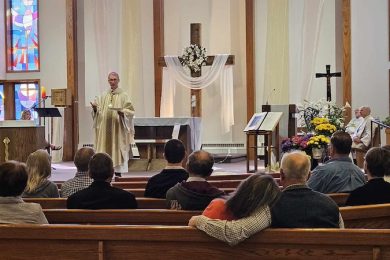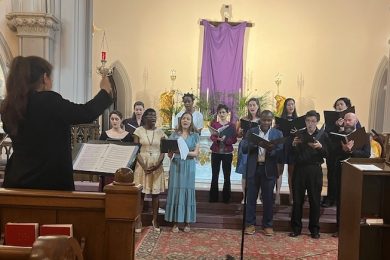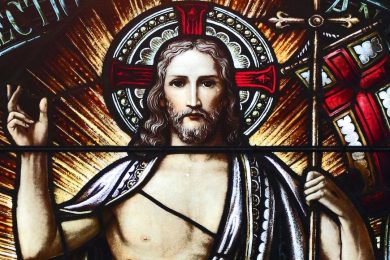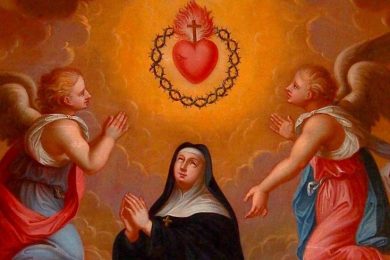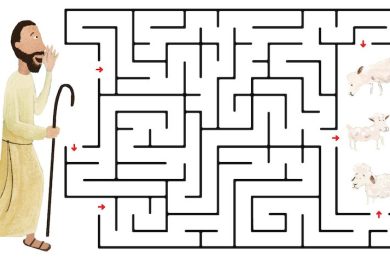By Mike Mastromatteo | Catholic News Service
Emerging writer Kirstin Valdez Quade made a modest splash in North American literary circles with the 2015 release of “Night at the Fiestas,” a short-story collection deemed vibrant and refreshing by most reviewers.
The nine-story collection, set primarily in the U.S. Southwest, garnered no shortage of recognition and awards, including a National Book Critic Circle Award and a 5 Under 35 awards from the National Book Foundation.
It was an impressive debut for the engaging Santa Fe, New Mexico, native whose peripatetic childhood and adolescence provided the memories and recollection to bring rich detail to her narratives.
“I’ve built my life around books,” Quade told CNS in a recent interview. “I’d say I’m a writer with all kinds of influences and life experiences, and Catholicism is a part of that.”

Quade was baptized at Our Lady of Guadalupe Parish in Santa Fe, but more often attended Mass with her grandmother at nearby St. Francis of Assisi, the cathedral-basilica for the Santa Fe Archdiocese. One of her short stories, “Ordinary Sins,” is based on her observation of parish life at the basilica.
Quade studied creative writing at Stanford University in California and later obtained a master fine art degree from the University of Oregon. After teaching stints at Stanford and the University of Michigan, today she is an assistant professor of creative writing at Princeton University in New Jersey.
The author’s latest work, “The Five Wounds,” was published by W.W. Norton in April. Its narrative energy derives from the protagonist’s preparations to portray the crucified Christ in a small New Mexico community’s annual reenactment of the Passion story.
Like the Christ figure in the Gospel stories, the central character, Amadeo, is also 33 years old. But it’s there that the parallels come to an end. As an underachieving, barely employed alcoholic with a pregnant 15-year-old daughter and an estranged ex-wife, Amadeo secretly hopes the sacrifices and suffering he undergoes in the Passion story will somehow bring new meaning and purpose to his life.
Amadeo’s motivation for seeking the Christ role however is hardly ideal. As Quade relates early in the story, “… Even more shameful is Amadeo’s memory of his own earnest absorption in his role of Jesus, his immersion in — what? Prayer? No, Amadeo was immersed in something even more ludicrous than that: belief in himself, belief that he might actually succeed at something difficult and pure.”
Despite his many flaws and failing however, Amadeo wins the sympathy of the reader. His doubt and confusion about the purpose of suffering give way to understanding about how attempting to share in Christ’s suffering — however imperfectly and with questionable motives — is ultimately a good thing.
“Amadeo is definitely a flawed character,” Quade said. “He’s an addict, he blames others for his difficulties and looks to his mother to bail him out. He hasn’t been present for his daughter, and he resents her asking him for support now, when she needs him the most. What makes me care about Amadeo and root for him, however, is that he wants to change. He wants to become a better father, a better man. And when a character wants something — especially something that I as a reader value — I find myself rooting for that character.”
Quade’s complex treatment of Amadeo is even more compelling considering that he initially appears as a character in a short story from “Night at the Fiestas.” Also titled “The Five Wounds,” the short story limits its narrative to Amadeo’s immediate preparations for the Passion story reenactment. One gets the sense that Quade was so intrigued by the Amadeo of the short story that a novel-length treatment was inevitable.
“I found, after the (original short) story was published, that the characters still interested me, and I still had questions about how they would face the challenges that were bound to arise after the story’s end,” Quade explained. “The story ends with a dramatic crucifixion and an epiphany, and I kept wondering, What happens the next day? Has Amadeo really changed? The novel grew from those questions.”
“Amadeo is in a state of anxiety and pain in this scene, and he’s also completely absorbed in his own anguish,” she added. “To him in this moment, his suffering is as sharp as some of the worst suffering ever experienced. So he’s being pretty immature and self-absorbed. But there is certainly something to his point that pain is sharpened when we don’t know how long it will last.”
While Quade’s Catholic upbringing has clearly influenced her storytelling, some of her work touches on issues of alienation and “otherness” that beset even the best intentioned of institutions.
“The Catholic Church has a great deal to reckon with and make amends for,” Quade said. “It is an extraordinarily wealthy and powerful institution that is concerned, like other wealthy and powerful institutions, with maintaining its power. We have seen over and over how some of the most vulnerable people have been crushed by those who abuse their power.”
Nonetheless, the author’s body of work continues to suggest that, despite doubt, uncertainty, human weakness and the assorted furies that bedevil the human condition, there is still something to be gained by an effort to imitate the sufferings of Christ — and, in turn, to show compassion in the face of human struggle.
Perhaps it’s best revealed by Amadeo’s epiphany in the concluding paragraphs of “The Five Wounds.” As he deals with his own suffering, Amadeo comes to understand that at least part of redemption involves looking beyond the self. “Amadeo pities his old self,” Quade writes, “the self that once believed there was a single, big thing he could do to make up for all his failings. He missed the point. The procession isn’t about punishment or shame. It is about needing to take on the pain of loved ones. To take on the pain, first you have to see it. And see how you inflict it.”
Mike Mastromatteo is a writer and editor in Toronto.



